‘Marry Me’ Didn’t Save the Rom-Com, but Here’s 4 Practical Ideas That Could

Jennifer Lopez wants to save it. Netflix wants to save it. Rose Matafeo wants to save it. Indie film has already saved it. But this weekend, “Marry Me” proved to be another uninspiring example of the studio-backed American rom-com. Even with a title that seemed custom-made for the return of superstar JLo to a genre she appears to genuinely love, plus the multi-hyphenate performing multiple original songs in the film, the film opened this pre-Valentine’s Day weekend to $8 million.
You could blame the slow return of women to theaters, Super Bowl Weekend, or that the film played for free on Peacock; any or all could be true. But here’s another reason: “Marry Me,” like so many rom-coms before it, isn’t very good. While Lopez is an extraordinary performer, all those songs start to feel like product placements. The ostensible reason for the film — how Lopez as superstar Kat and Owen Wilson as single dad Charlie will fall in love after their snap wedding — feels like an afterthought.
More from IndieWire
When rom-coms are good, they’re delightful, funny, sweet, and heartwarming, the hot-fudge sundae of storytelling. And while box office is not the metric it used to be, a rom-com hasn’t placed in the annual domestic top 10 since 2005 with “Wedding Crashers” and “Hitch.”
American-studio rom-coms cycled through screwball comedies in the ’30s and ’40s, sexually liberated outings in the ’70s, and the golden age of the ’90s, when we saw the Nora Ephron triumvirate and the rise of star-packed Black rom-coms, followed by the overlooked aughts and the Nancy Meyers renaissance.
One reason for the genre’s disappearance is financial. As studios saw audiences dwindle, rom-coms became a risk. They don’t make franchise money and occupy the dreaded mid-budget zone where they cost too much to be made “at a price.” (At $23 million, “Marry Me” would need to gross around $70 million to break even.)
That hasn’t stopped some producers from trying. In the last few years, we’ve had Charlize Theron and Seth Rogen in “Long Shot,” Rebel Wilson and Liam Hemsworth in “Isn’t It Romantic,” and Lopez (again) in “Second Act” — all stalled out long before they hit $50 million. Twenty years ago, low-budget, no-star rom-com “My Big Fat Greek Wedding” made superhero money with over $240 million.
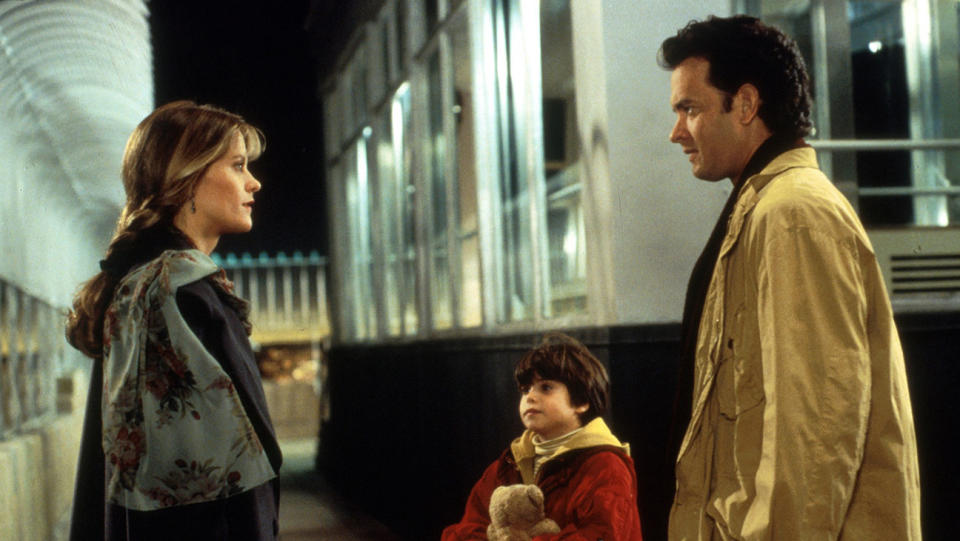
TriStar/Photofest
Like horror films and action movies, the rom-com is a genre — and too often, that means it’s treated as a commodity. Build the rom-com, the logic seems to go, and they will come. As the box office likes to remind us, that’s not true. It’s ripe for another golden age. Here’s how to make the next round of funny, sexy love stories stand out.
1. Stop the Mad Libs
Many genre films suffer from a case of Mad Libs, in which producers let seemingly pre-determined slots dictate the story. Choose from a roulette wheel of stars, ideas, and plots; one’s as good as another, right? Liam Neeson’s late-career renaissance may be the best argument for why that’s not entirely wrong; can you tell the difference between the absurdist plots of “Blacklight,” “The Ice Road,” “Honest Thief,” “Cold Pursuit,” and “The Commuter”? (Neeson may not be able to, either.)
But when this happens to romantic comedies, the results are more disheartening. An action movie can raise your pulse with kinetic action sequences and pulsing soundtracks. In a romance, where characters are the only special effects, it must create circumstances that let you invest in their make-believe future.
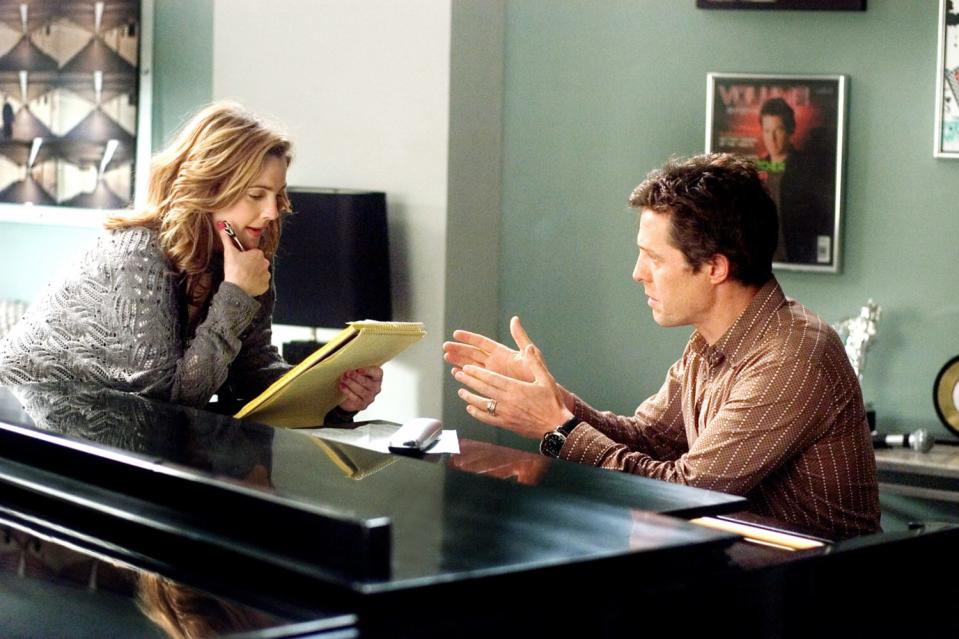
?Warner Bros/Courtesy Everett Collection
In the last film of Hugh Grant’s rom-com career, the 2007 “Music and Lyrics,” he’s well cast as the pop star who’s growing bitter and going to seed — but then the Mad Libs kick in. Hugh Grant and Drew Barrymore star as Alex Fletcher, a washed-up pop star, and Sophie Fisher, the much younger lady who waters his plants. When they team up to write new pop jams in hopes of reviving his career and giving her purpose, they will absolutely fall in love. While it’s directed by veteran rom-screenwriter Marc Lawrence, “Music and Lyrics” goes beyond contrived; it’s bizarre.
Mad Libs also bolstered the damning rise of the multi-pronged, interwoven rom-com omnibus, including “He’s Just Not That Into You” (based on, uh, a self-help book), “Valentine’s Day” (based on a holiday), and “New Year’s Eve” (same). These films had massive names behind them — Garry Marshall directed two of them! “He’s Just Not That Into You” features four Oscar-nominated performers! — but the gamification of its plotting meant no one (and no one one story) could shine.
These films didn’t feel considered, genuine, believable, or cared for. They were quick hits meant to spin rom-com tropes so fast that maybe the audiences wouldn’t have the time to notice just how rote it all was. Now, a Liam Neeson mid-career rom-com — that we could go for.
2. Cast for Chemistry
Rom-coms often forget the reason for their existence: We want to see these people together. That’s it. We want to see these people together. Chemistry is the magic little crackle that gives us reason to root for their success. Without it, a rom-com isn’t worth a damn.
As Netflix pushes further into the rom-com space, it’s carved out a sub-niche with YA rom-com franchises that include “Kissing Booth” and “To All the Boys I’ve Loved Before.” Both series follow teenage leading ladies (Joey King and Lana Condor, respectively) mixed up in increasingly convoluted love triangles, squares, and rhombuses. It’s an impressive way to find sequels for stories that end with happily-ever-afters; having so many love interests to play against our stars offers a unique A-B test for the chemistry of possible paramours.
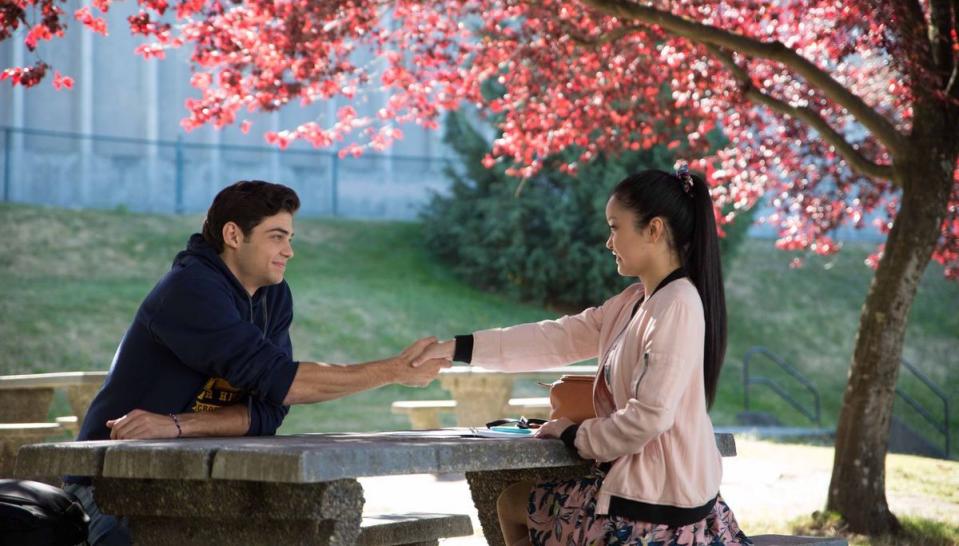
Netflix
While Condor’s Lara Jean has the best chemistry with Noah Centineo’s Peter in “To All the Boys” (Spoiler alert: He’s the one she’s meant to end up with), King’s Elle isn’t so lucky. She juggles a handful of handsome dudes in the three-film series but exhibits the most chemistry with Joel Courtney’s Lee… who plays her best friend. Oops?
Chemistry, like love, is rare. Why else did we watch Tom Hanks and Meg Ryan fall in love three times over eight years? And casting is hard. You can audition actors for their looks, their performances, and their Q Scores, but when a producer is faced with a shooting schedule and a production deadline, it’s easy to squint at a chemistry read and decide, “Eh, close enough.”
3. Spend the Money
In 1994, Norman Jewison helmed the delightful rom-com “Only You” starring an effervescent Marisa Tomei and a charming Robert Downey, Jr. The film shot everywhere from Pennsylvania to Italy (or, as Fisher Stevens’ romance-challenged character iconically calls it, “It’ly!”) You want to make a movie about people who fall in love in It’ly? You’ve got to go to Italy. Jewison shot all over Rome and Tuscany with multiple piazzas, multiple fountains, and hotels in Venice and Positano besides.
Every dollar shows on the screen. Who wouldn’t fall in love under those conditions? Here’s another silly question: Today, could you imagine any studio agreeing to greenlight a rom-com under those conditions? The film made just $20 million and studios took the wrong lesson. Rom-coms don’t require $100 million budgets, but they look like hell when they’re not given room to breathe. Romance happens in the world, and it’s hard to be swept away by romance when you’re stuck on a soundstage.
That’s a lesson Jon M. Chu’s wildly successful “Crazy Rich Asians” knew well. Made for a modest $30 million, it still splashed out on the luxe settings that made the book it was based on so memorable. (The leads are, after all, “crazy rich.”) Sumptuous production design, incredible costumes (that wedding dress!), and vibrant locations pumped up the richness of the film and story while introducing audiences to places rarely depicted in Hollywood films. The film made a (crazy rich) $238 million at the box office.
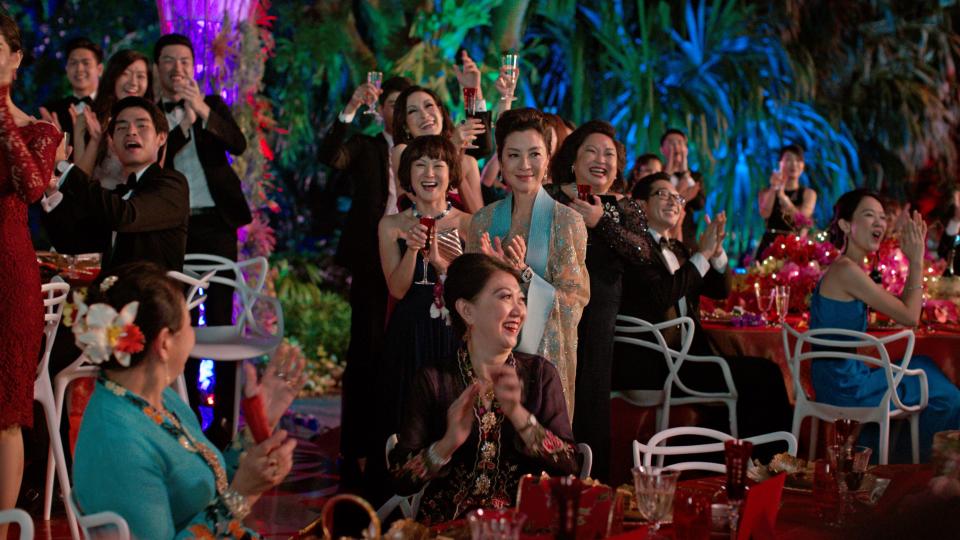
Warner Bros.
Think of all the wonderful New York City-set rom-coms in which (cliche, but true) the city becomes a character. Picture “Serendipity” without Central Park. “You’ve Got Mail” without actual Upper West Side streets. “Breakfast at Tiffany’s” without Tiffany’s. “Moonstruck” without the Brooklyn storefronts.
It’s not just New York that makes the heart sing: picture “The Best Man” franchise without glossy weddings, or “Sleepless in Seattle” without the waterfront, or even “How Stella Got Her Groove Back” without Jamaica. The brain, like the heart, knows what’s fake.
4. Dare to Be Silly
Some of the best recent rom-coms succeeded because they didn’t shy away from the tough stuff, like catastrophic illness (“The Big Sick”), sex addiction (“Sleeping with Other People”), divorce (“Celeste and Jesse Forever”), and abortion (“Obvious Child”). It’s the genre’s silly side that’s ailing.
It’s in the name: Laughs are as important to these films as romance. “Girls Trip” is a raucously funny comedy that slips in some sexy romance alongside its attention to the value of female friendship. (“Bridesmaids” does the same thing, a balance more films should seek.)
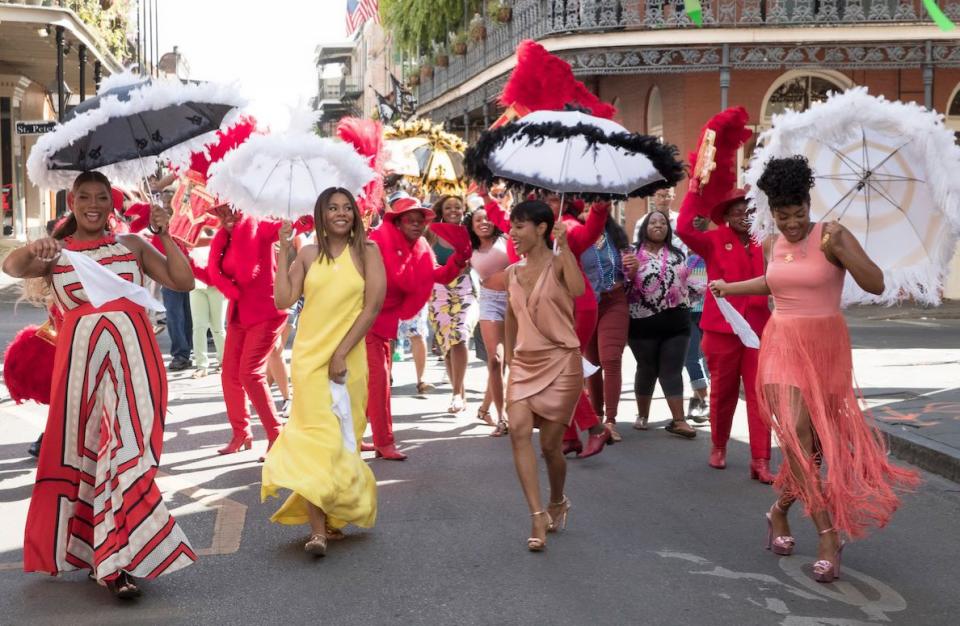
Rom-coms live and die by their tropes and common narratives, many of which are very silly indeed. Lovers who meet via house-swapping or weirdo AOL chat rooms or because one of them got amnesia when they fell off a boat… that’s not just okay, it’s preferred in a genre built on cinematic escapism.
As long as you’ve laid the groundwork of no Mad Libs, good chemistry, and a bit of cash, rom-coms can get as silly and wacky as they like. And, yes, just as heart-warming and funny as we’ve come to expect — and should continue to demand.
Best of IndieWire
Sign up for Indiewire's Newsletter. For the latest news, follow us on Facebook, Twitter, and Instagram.
Solve the daily Crossword

